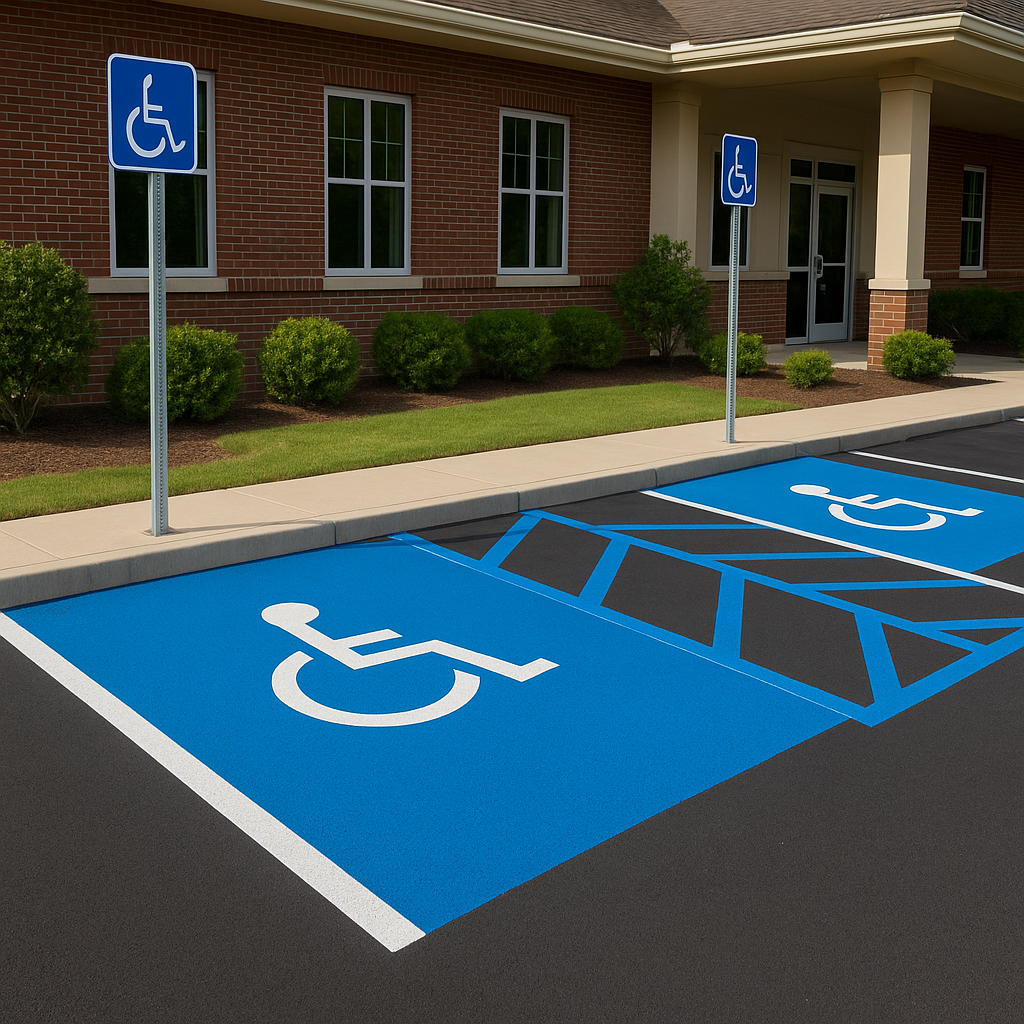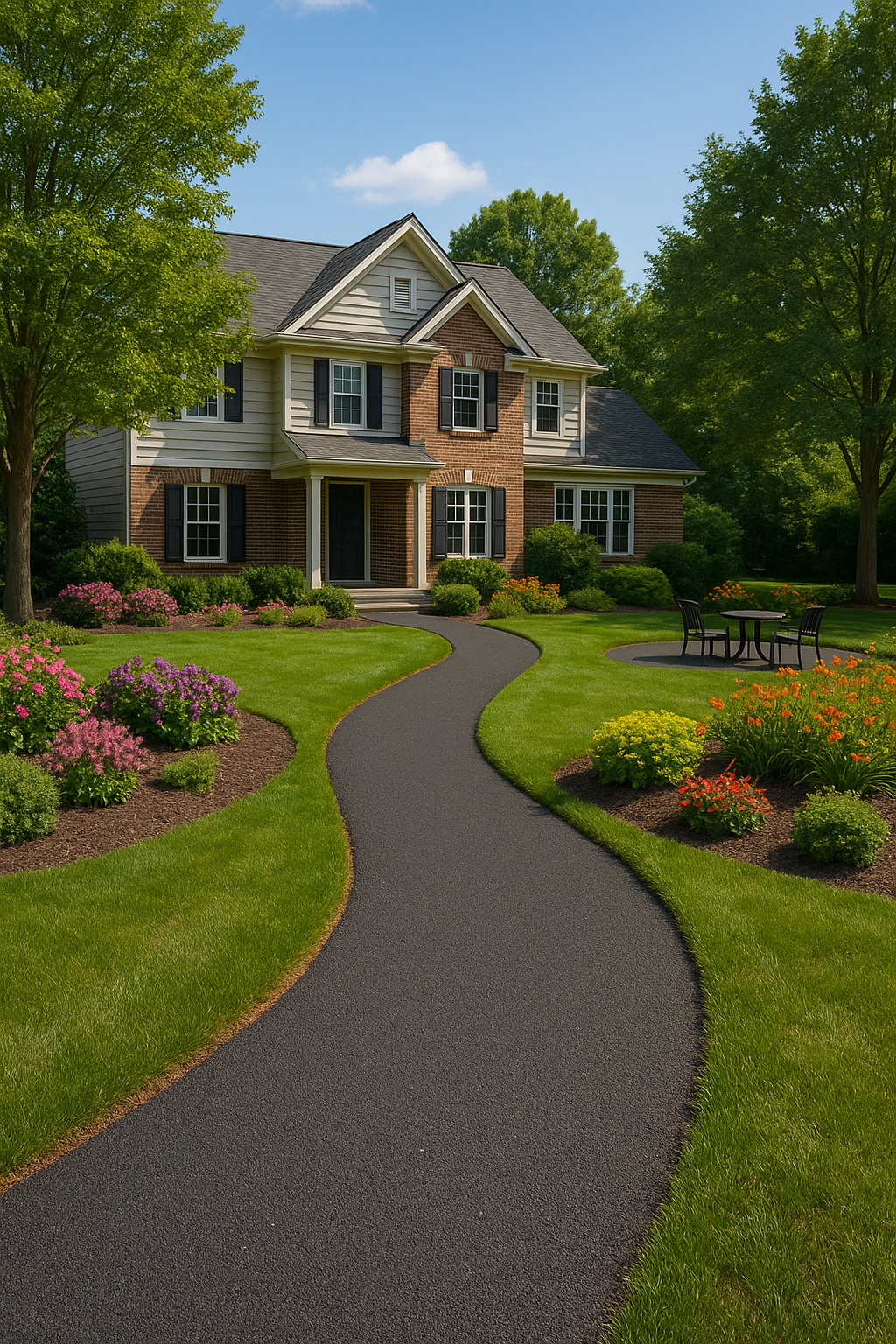By John Jernigan
•
October 8, 2025
When you think about asphalt paving, your mind probably goes straight to driveways and parking lots. And that makes sense—those are the most common applications. But if you stop there, you're missing out on some creative ways asphalt can enhance your property's functionality, value, and enjoyment. Over our 30+ years serving Middle Tennessee homeowners, we've paved everything from basketball courts to dog runs, garden pathways to RV pads. Each project solved a specific problem or unlocked new possibilities for the property. Today, we're sharing some of the most popular (and surprising) ways homeowners are using asphalt beyond the traditional driveway. RV and Boat Storage Pads If you own an RV, boat, or trailer, you already know the storage challenge. Parking these vehicles on grass creates ruts, mud, and an eyesore. Gravel helps but requires constant replenishing and still looks messy. A dedicated asphalt pad solves all these problems elegantly. Why it works: Asphalt provides a stable, level surface that can handle the weight of heavy recreational vehicles without sinking or shifting. It drains well, keeps your investment clean and accessible, and looks infinitely more polished than a dirt or gravel patch. Design considerations: Size the pad to accommodate not just the vehicle but also walking space around it for maintenance and cleaning. Include a slight slope for drainage. Many homeowners position these pads alongside the house or behind a fence line for a clean look that doesn't dominate the front yard. Bonus benefit: A proper RV pad can be a selling point if you ever list your home, especially in areas where recreational vehicle ownership is common. Backyard Basketball Courts There's something special about having a court in your own backyard. No waiting for the neighborhood park to clear out. No fighting for space. Just grab a ball and play whenever the mood strikes. Why asphalt is ideal: While concrete is also an option, asphalt offers a slight give that's easier on joints during those pickup games. It's also more forgiving on the ball, creating a better bounce and more authentic playing experience. And let's be honest—asphalt simply looks right for a basketball court. Size options: You don't need a regulation full court to have fun. A half-court (47' x 50') works great for most families. Even a smaller shooting area (20' x 20') gives kids a place to practice free throws and work on their game. Long-term value: Beyond the obvious recreational benefits, a well-maintained court can become the neighborhood gathering spot, keeping kids active and close to home. We've had parents tell us their basketball court was one of the best investments they made in their property. Multi-Purpose Sport Courts Basketball isn't the only game in town. Many homeowners are creating multi-sport surfaces that accommodate basketball, pickleball, tennis practice, or roller hockey. The flexibility factor: With the right striping, a single asphalt surface can serve multiple purposes. Paint both basketball and pickleball lines, and suddenly you've got a court that appeals to different family members and ages. Pickleball's rising popularity: If you haven't noticed, pickleball has exploded in popularity, especially among active adults. A pickleball court measures just 30' x 60'—much more manageable than a tennis court and perfect for many residential properties. Future-proofing fun: Kids' interests change. Today they want basketball, next year they're into roller hockey. A multi-purpose asphalt surface adapts to whatever phase they're in. Walking Paths and Garden Trails Not every asphalt project needs to accommodate vehicles. Some of the most charming applications involve creating walking paths through your property. For large properties: If you have acreage, asphalt paths can connect different areas—from your house to a pond, through wooded areas, or around garden beds. These paths are wheelchair and walker accessible, making your entire property usable for family members with mobility challenges. Garden walkways: Create defined paths through landscaped areas that stay clean and mud-free year-round. Unlike mulch that needs annual replacement or stepping stones that shift and settle, asphalt paths are permanent, low-maintenance solutions. The aesthetic approach: Asphalt paths don't have to look industrial. Edged with natural stone, bordered by plantings, or designed with gentle curves, they can feel organic and intentional rather than utilitarian. Dog Runs and Pet Areas Pet owners know the struggle: dogs love to run, but running on grass creates worn patches, mud pits, and tracked-in mess. An asphalt dog run solves these problems while giving your four-legged family members a dedicated space. Practical benefits: Asphalt is easy to clean and hose down, doesn't harbor parasites like dirt can, stays usable in wet weather, and provides good traction for dogs to run without slipping. Size and design: A dog run can be as simple as a long rectangular strip alongside your fence line or a larger area where dogs can really stretch their legs. Add shade structures or install it where natural shade exists for summer comfort. Bonus for rental properties: If you rent out properties, a designated pet area can be a significant amenity that attracts responsible pet owners while protecting the rest of your landscaping. Equipment Storage and Work Areas Sometimes you need a clean, stable surface for practical work—not recreation. Asphalt delivers here too. Workshop extensions: Create an outdoor work area adjacent to your garage or workshop where you can work on projects without worrying about weather or mess. Perfect for woodworking, vehicle maintenance, or equipment repair. Shed and storage building pads: Rather than placing sheds directly on ground that will settle and shift, install them on asphalt pads that provide lasting stability and keep your storage building level and dry. Outdoor hobby spaces: Whether you're into welding, painting, pottery, or any hobby that benefits from outdoor space and easy cleanup, an asphalt pad creates a defined area that's functional year-round. Pool Decking and Surrounds While many pools feature concrete decking, asphalt can be an excellent choice for pool surrounds, especially for kidney-shaped or free-form pools where pouring concrete becomes complex and expensive. Why consider asphalt: It's slip-resistant when properly finished, comfortable to walk on barefoot (especially compared to concrete that can get scorching hot), and can be surfaced to handle pool chemicals and water exposure. Design integration: Asphalt pool surrounds can extend into patio areas, connecting your pool to other outdoor living spaces in a cohesive design. Cost advantage: For larger pool areas or complex shapes, asphalt can provide significant cost savings compared to stamped concrete or pavers while still delivering a durable, attractive surface. Driveway Extensions and Turn-Arounds This might seem like standard driveway territory, but many homeowners don't realize how much an extension or turn-around area can improve daily function. Turn-around areas: If you have a long driveway, adding a turn-around means never backing out blindly onto the road—a safety improvement that also makes life easier, especially in winter weather or when you're in a hurry. Additional parking: Create an extended area off your main driveway for guest parking, extra household vehicles, or overflow when you're entertaining. It's the difference between having cars parked on your lawn during parties or everyone having proper space. Side access: Connect your driveway to a backyard gate or side entrance, making it easy to bring in equipment, furniture, or materials without crossing your lawn. Tennis Courts and Sport Surfaces For properties with the space, a private tennis court is the ultimate recreational amenity. While this is a larger investment, the value it provides for tennis enthusiasts can't be overstated. The asphalt advantage: Tennis courts require a perfectly smooth, stable surface with proper slope for drainage. Asphalt delivers this foundation and, when properly maintained with acrylic surface coatings, provides playing characteristics identical to what you'd find at professional facilities. Space requirements: A regulation tennis court requires approximately 60' x 120', but you can adjust dimensions slightly for practice courts or modified play areas. Multi-generational appeal: Tennis is a sport you can play at any age, making a home court an investment that serves your family for decades. Fire Pit and Outdoor Living Foundations Creating outdoor living spaces? Asphalt can provide the foundation for fire pit areas, outdoor kitchens, or entertainment zones. Why asphalt as a base: It creates a level, stable, and fire-resistant foundation that won't shift like gravel or retain moisture like bare ground. You can then add decorative pavers, outdoor rugs, or furniture directly on the asphalt surface. Integration with landscaping: Use asphalt to define the footprint of your outdoor living area, then soften the edges with plantings, stone borders, or other landscape features that match your style. Making Your Vision Reality The common thread in all these applications? Asphalt's versatility, durability, and cost-effectiveness. It's not just about creating a surface—it's about unlocking new ways to use and enjoy your property. At J&J Asphalt, we love creative projects. When a homeowner calls with an idea that goes beyond the standard driveway, we get excited about solving the unique challenges each project presents. How do we handle drainage for a dog run? What's the ideal surface finish for a basketball court? How do we integrate an RV pad into existing landscaping? These aren't problems—they're opportunities to create something that perfectly serves your needs. Start with a Conversation Maybe you've been thinking about one of these projects but weren't sure if asphalt was the right choice. Or perhaps this article sparked an idea you hadn't considered before. Either way, we'd love to talk through your vision. We'll visit your property, understand what you're trying to accomplish, assess the space and any challenges, and give you honest feedback about whether asphalt is the best solution or if another approach might serve you better. Some projects need careful planning—proper base preparation, drainage considerations, or permits. Others are surprisingly straightforward. The only way to know is to have a conversation about your specific situation. Beyond the Ordinary Your property has potential beyond what's immediately obvious. That underutilized side yard could become an RV pad. That area where grass never grows could be a sport court. That long walk to your shed could be a proper path. Asphalt isn't just for getting from the street to your garage. It's a tool for creating functional, valuable spaces that make your property work harder for you and your family. What could we help you create? Ready to explore creative uses for asphalt on your property? Contact J&J Asphalt to discuss your ideas. From basketball courts to RV pads, walking paths to work areas, we bring 30+ years of experience to projects throughout Middle Tennessee.



